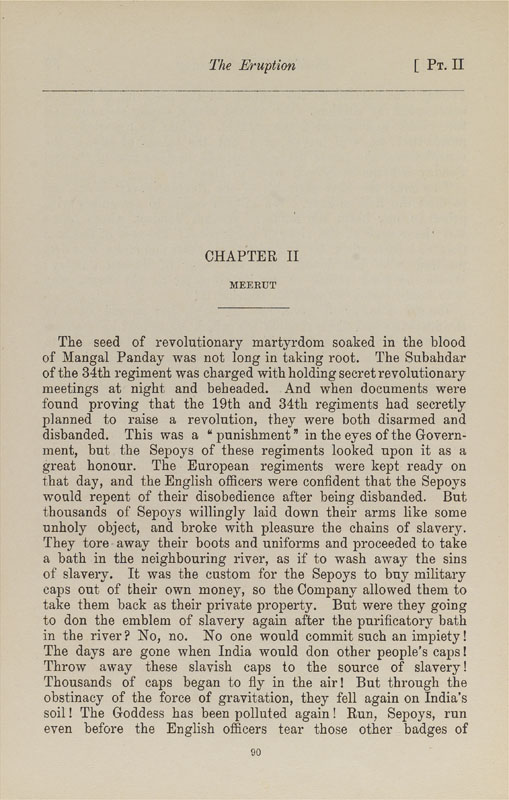The Eruption
[ Pt. II
CHAPTER II
MEERUT
The seed of revolutionary martyrdom soaked in the blood
of Mangal Panday was not long in taking root. The Subahdar
of the 34th regiment was charged with holding secret revolutionary
meetings at night and beheaded. And when documents were
found proving that the 19th and 34tli regiments had secretly
planned to raise a revolution, they were both disarmed and
disbanded. This was a " punishment" in the eyes of the Govern¬
ment, but the Sepoys of these regiments looked upon it as a
great honour. The European regiments were kept ready on
that day, and the English officers were confident that the Sepoys
would repent of their disobedience after being disbanded. But
thousands of Sepoys willingly laid down their arms like some
unholy object, and broke with pleasure the chains of slavery.
They tore away their boots and uniforms and proceeded to take
a bath in the neighbouring river, as if to wash away the sins
of slavery. It was the custom for the Sepoys to buy military
caps out of their own money, so the Company allowed them to
take them back as their private property. But were they going
to don the emblem of slavery again after the purificatory bath
in the river ? No, no. No one would commit such an impiety!
The days are gone when India would don other people's caps!
Throw away these slavish caps to the source of slavery!
Thousands of caps began to fly in the air! But through the
obstinacy of the force of gravitation, they fell again on India's
soil! The Goddess has been polluted again! Run, Sepoys, run
even before the English officers tear those other badges of
90
n
|








